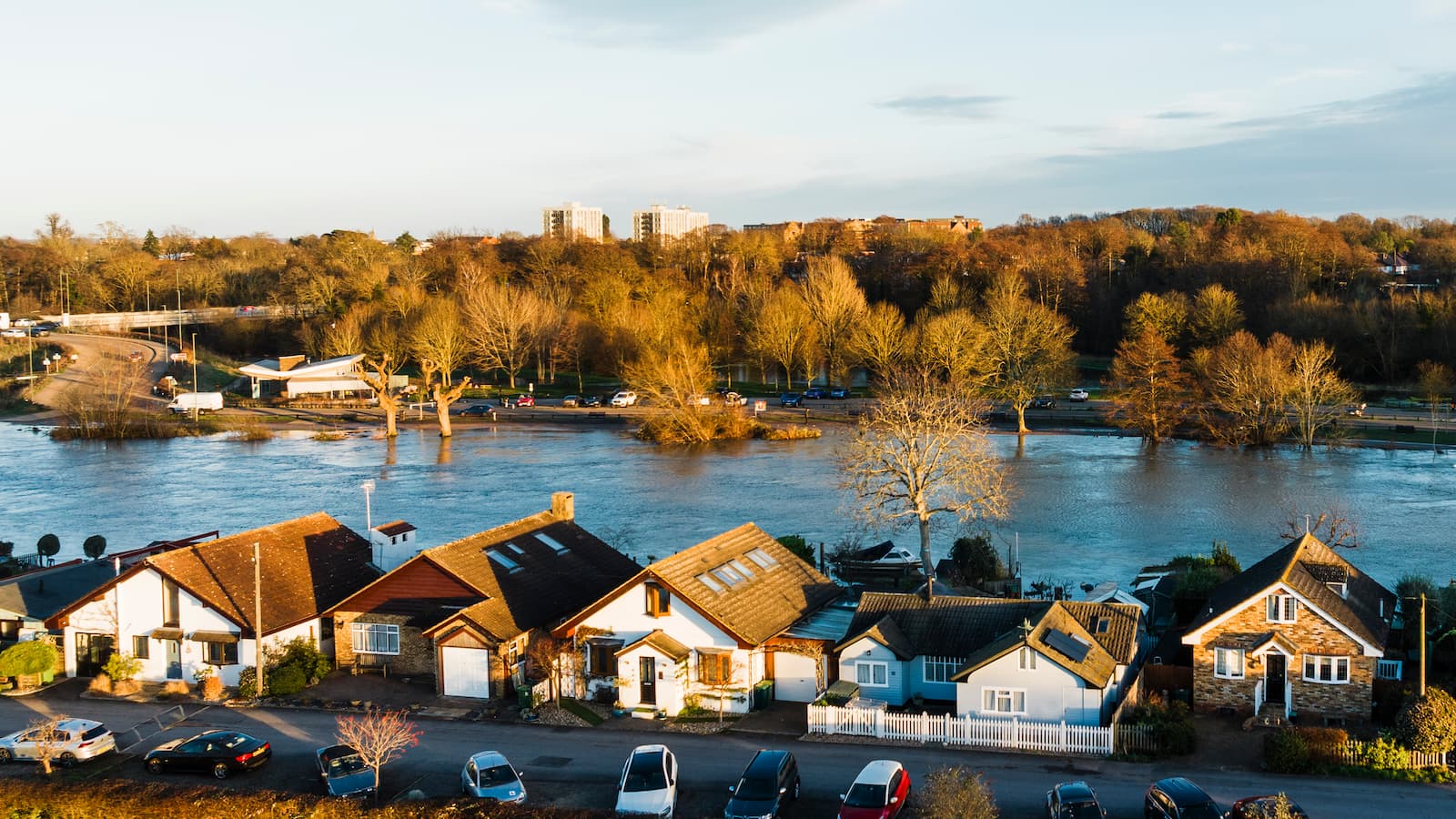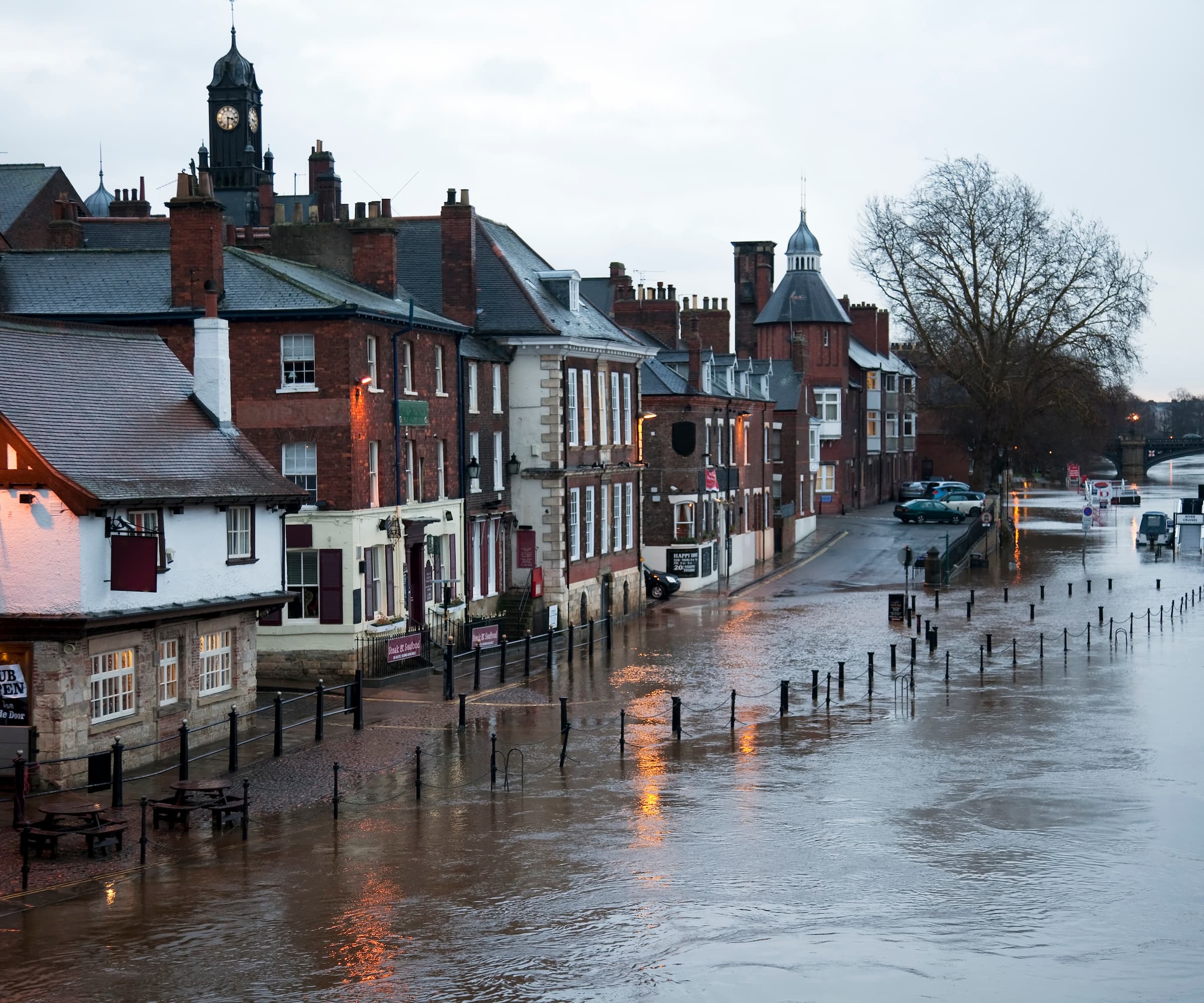Over 7,000 homes set to be built in highest flood risk areas, think tank finds
As flood risk homes continue to be built we look at why councils continue to allow this and why developers choose this land

A recent report reveals that planning permission has been granted for over 7,000 homes in areas at the highest risk of flooding in England.
According to think tank Localis, over 7,000 homes received full or conditional approval to be built on previously undeveloped land at risk of flooding across 12 local authorities with the most properties at flood risk.
Despite the dangers, there are currently no laws preventing planning permission for homes in high-risk flood zones. We look at why this is and why developers continue to build on flood-prone land.
By 2070 flood-risk homes could rise by 50%, Environment Agency says
Think tank Localis reports that 7,116 homes have been approved for construction on undeveloped land with the highest flood risk in the country.
In fact, in 2022-23, the Environment Agency reported 267 cases where homes were approved for construction against their advice on flood risk.
“Advice from the Environment Agency around development in areas of flood risk has been ignored in some places, because the priority for housing is such that it takes precedence,” says Elizabeth Bundred Woodward from countryside charity CPRE.
Additionally, the Environment Agency predicts that by 2070, homes at risk of flooding could rise by 50%.
Bring your dream home to life with expert advice, how to guides and design inspiration. Sign up for our newsletter and get two free tickets to a Homebuilding & Renovating Show near you.
Localis has called on Environment Secretary Steve Reed to strengthen the role of the Flood Resilience Taskforce, which was recently established to oversee how flood resilience measures are incorporated into the planning process. The think tank also urged an increase in the Environment Agency’s capacity to maintain flood defence systems and ensure regulations are properly enforced.
No laws against granting planning permission in flood zones
Despite the UK's strict planning guidelines, there are actually no laws against granting planning in flood-risk areas.
Although it is encouraged to grant planning in other areas, often councils will grant planning in areas prone to flooding.
Sandy Forsyth, a clean growth researcher, emphasised the urgency of changing planning rules: “As long as new planning consents are being given to homes in flood zones on undeveloped land, people and communities will continue to see compounding risks. The time is now for the rules to change... so that the built environment can be resilient to current and future environmental hazards.”

Why is planning permission granted for homes in flood risk areas?
Despite repeated warnings from the Environment Agency and the Committee on Climate Change (CCC), the trend of building on flood-prone land persists.
Between 2001 and 2011, over 200,000 homes were constructed on these at-risk areas. Currently, nearly 500,000 additional homes on floodplains have already received planning permission.
Kersey's Solicitors point out that: "While building in floodplains remains possible, developers must follow strict planning guidelines. These include conducting flood risk assessments and designing homes with protective measures in place."
However, Joe Fyans, head of research at Localis, points out a key problem as to why these developments are allowed to continue: “Most of these [developments in Flood Zone 3] are micro developments of less than nine houses. But the problem is they are all being considered individually.
"What the system does is just look at the eight houses being proposed and say they’ve got good flood defences. But you’re still increasing the aggregate risk of surface flooding and runoff elsewhere.”
Why do developers choose flood-prone areas?
As pressure mounts to meet housing demands, developers are increasingly turning to flood-prone land due to its lower cost.
These areas are often cheaper and more readily available for development, making them attractive to developers trying to meet government housing targets.
Philip Box, policy adviser at the UK Green Building Council, highlights the challenge: “Places like London and Hull are in areas that have flood risk, but we can’t just not build there. Strong resilience and mitigation measures are essential. Without them, we’re just building houses that will flood or become uninsurable.”
Even when developers attempt to mitigate the risks with measures like elevating homes or installing flood defences, these efforts may not be enough. “There’s a lively debate about what constitutes flood resilience. Venice, for example, is flood-resistant, but is that feasible in the UK?” Box adds.
The absence of a clear national plan for future developments and insufficient data on long-term flood risks from climate change makes it difficult for local authorities to make informed decisions. As a result, homes continue to be built on land that could soon become uninhabitable.

News Editor Joseph has previously written for Today’s Media and Chambers & Partners, focusing on news for conveyancers and industry professionals. Joseph has just started his own self build project, building his own home on his family’s farm with planning permission for a timber frame, three-bedroom house in a one-acre field. The foundation work has already begun and he hopes to have the home built in the next year. Prior to this he renovated his family's home as well as doing several DIY projects, including installing a shower, building sheds, and livestock fences and shelters for the farm’s animals. Outside of homebuilding, Joseph loves rugby and has written for Rugby World, the world’s largest rugby magazine.
